Virginia bluebells are among our most beautiful spring ephemeral woodland wildflowers. I love the lush green-and-blue carpets that blanket the forest floor in mid-April in southeastern Pennsylvania.
These bluebells, Mertensia virginica in Latin, are members of the borage or forget-me-not family (Boraginaceae). Their electric-blue coloring as well as the elongated, pendulus, trumpet shape of their flowers look alike to kindred cousins such as borage, viper’s bugloss, comfrey, waterleaf, and others.
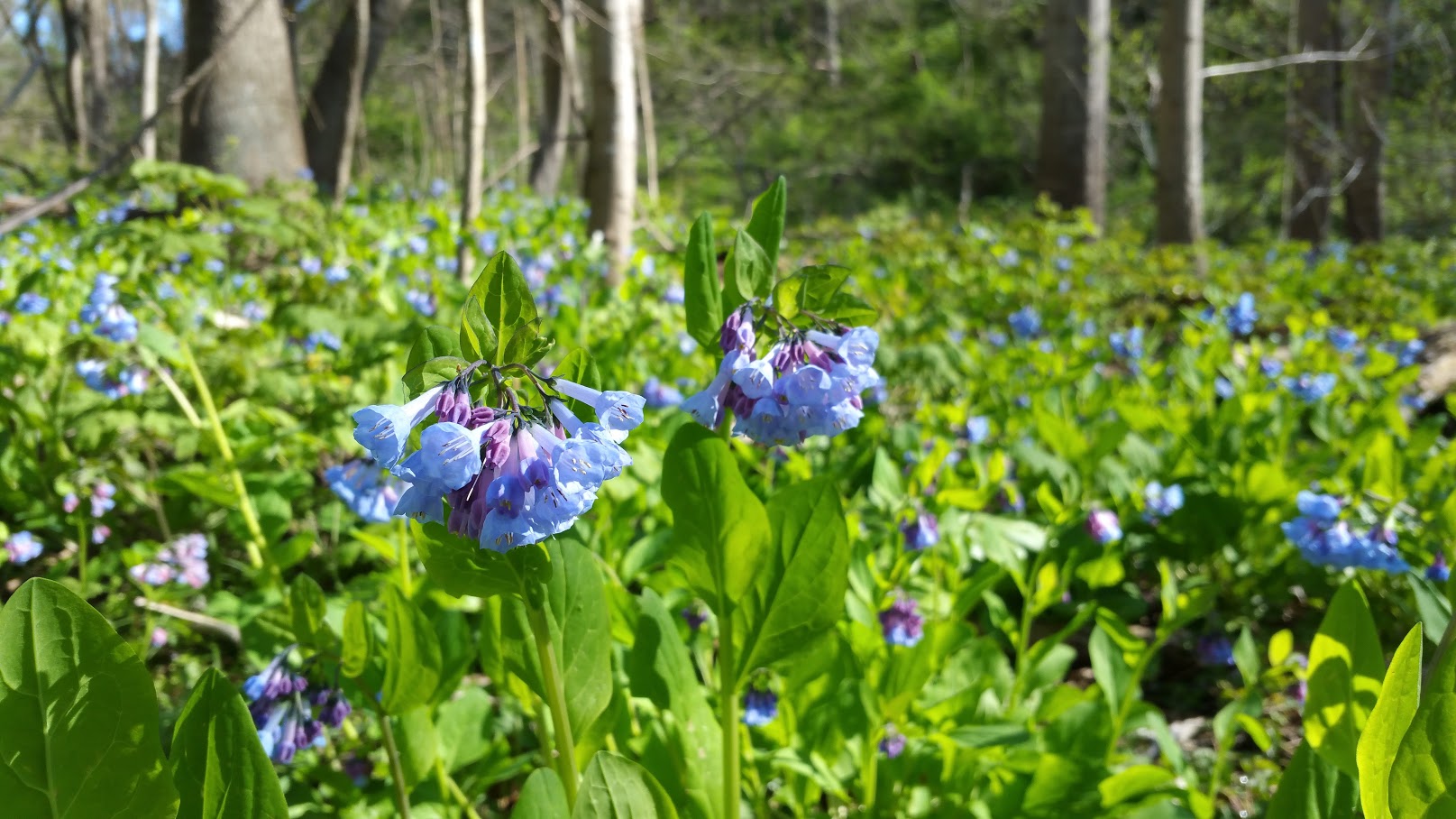
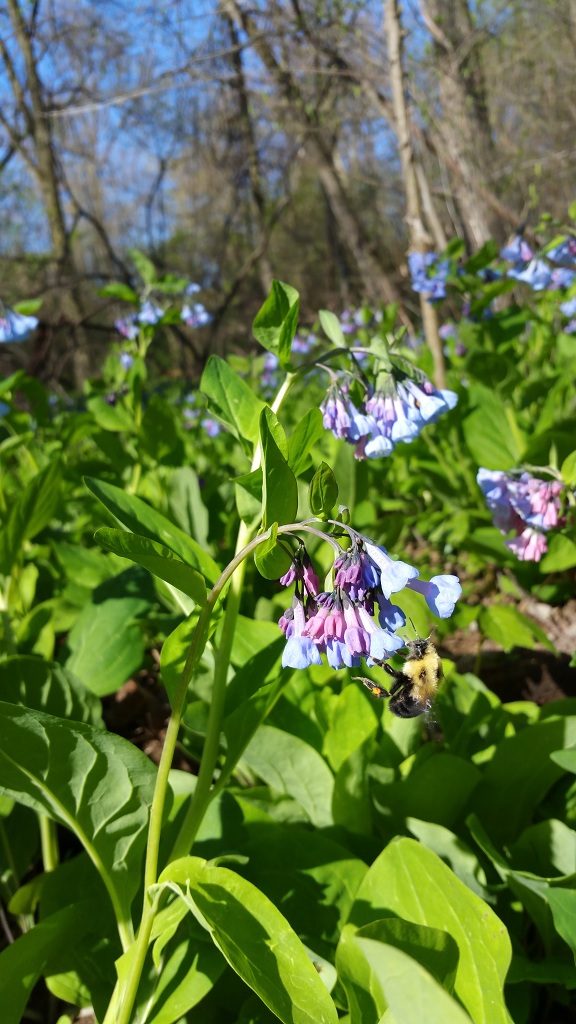
Mertensia virginica flowers are excellent insectaries. When a colony first blooms, it may be one of the year’s first bonanzas for pollinating insects, such this bumblebee pictured above drinking the sweet, sweet nectar of the blue flowers.
While the root of Mertensia virginica is not appetizing to humans — I have tasted it and can attest that it has a strong bitterness to it — the leaves, stems, and blossoms are quite palatable. The blossoms are deliciously sweet raw, much like sweet violets, and make for a delicate and beautiful garnish on a salad. The foliage has a stronger flavor, and is most often cooked steamed. Some report that the flavor is like that of oysters, though this trait is more often associated with Mertensia maritima, a sea-side coastal species within the same genus.
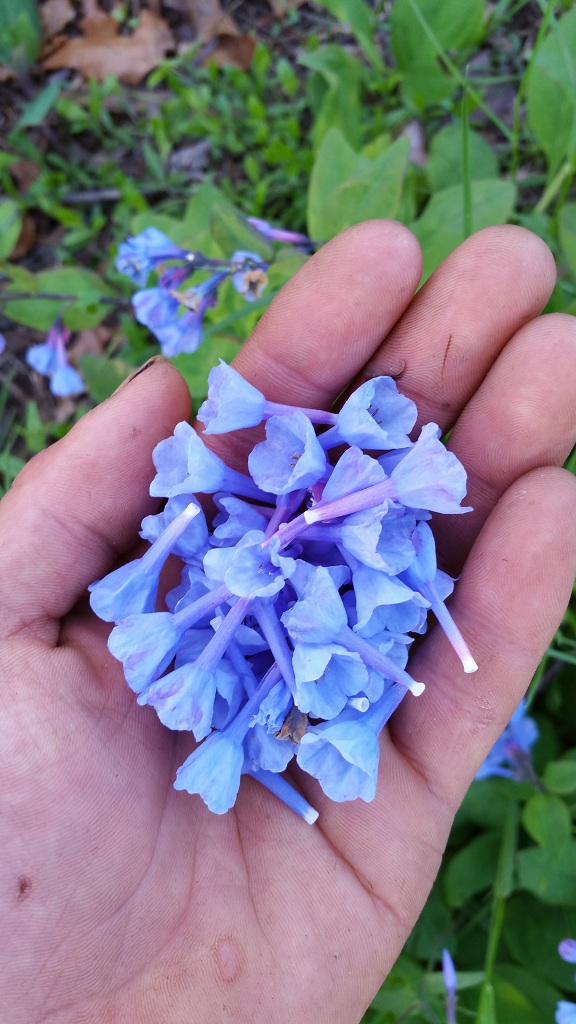
After the blossoms erupt in early and mid- April and get pollinated, the petals begin to drop off the calyxes one-by-one, leaving behind the prominent central pistil and the ovary to nurture the young seeds.

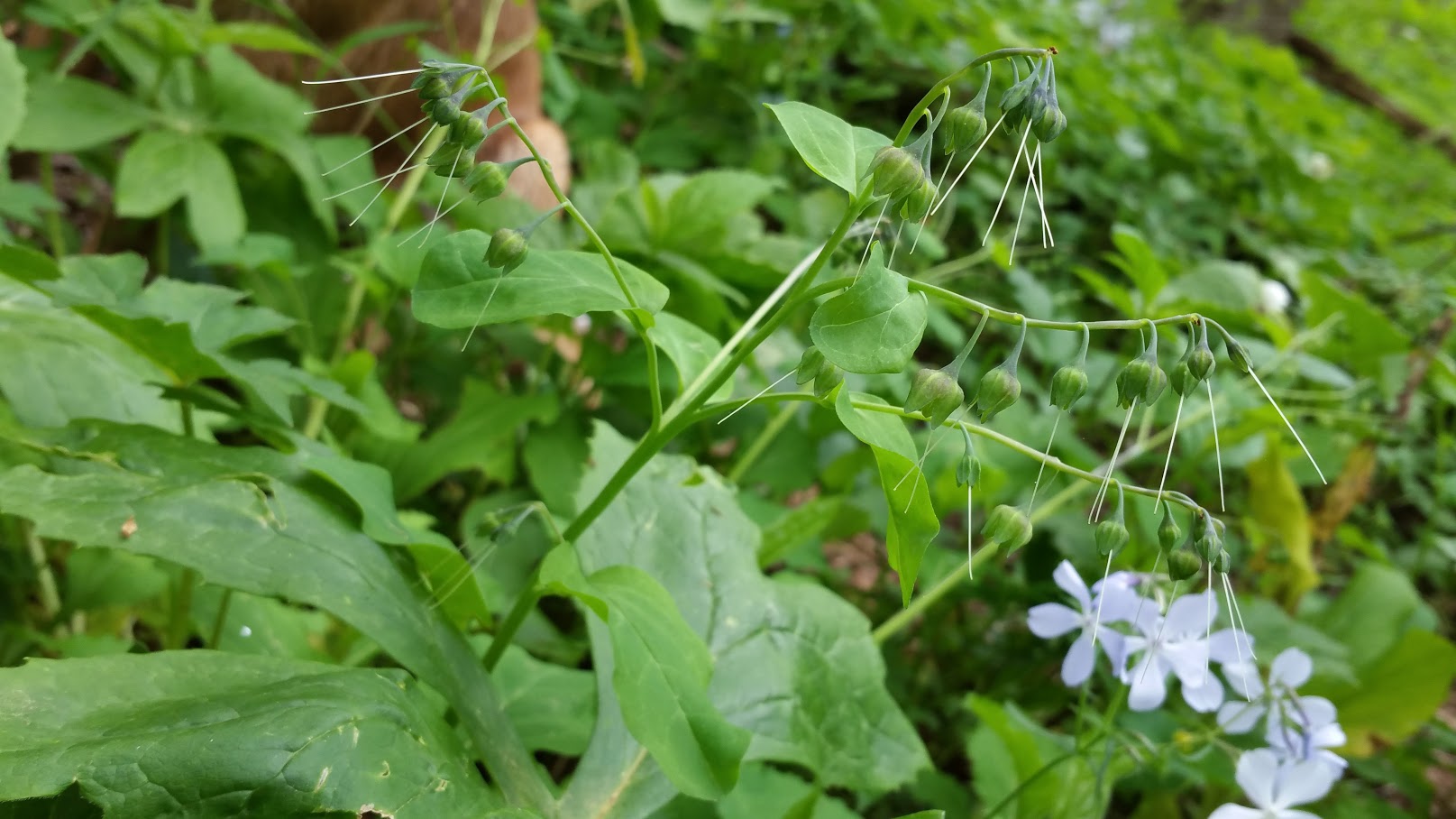
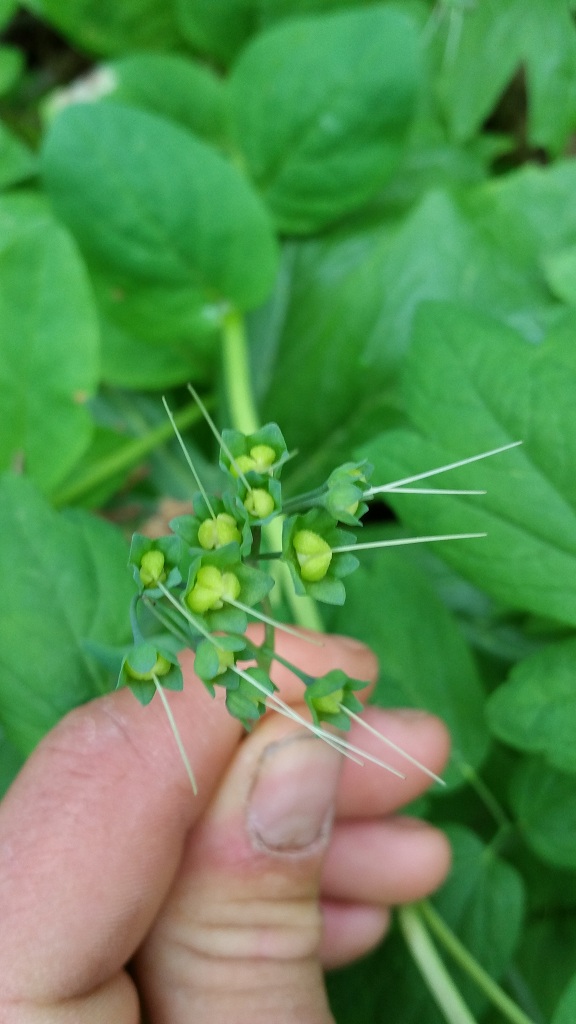
In this picture above we see the unripened seeds of Mertensia virginica. This picture was taken at the end of April, and it was perhaps another week before I would begin to avidly collect the stems for seed.
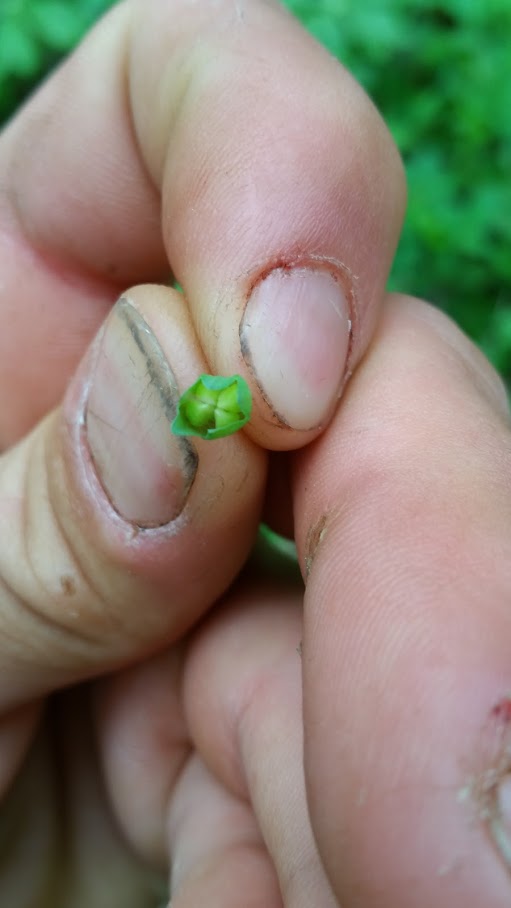
Here’s a closeup of an ovary showing the four seeds which are typical of each capsule.
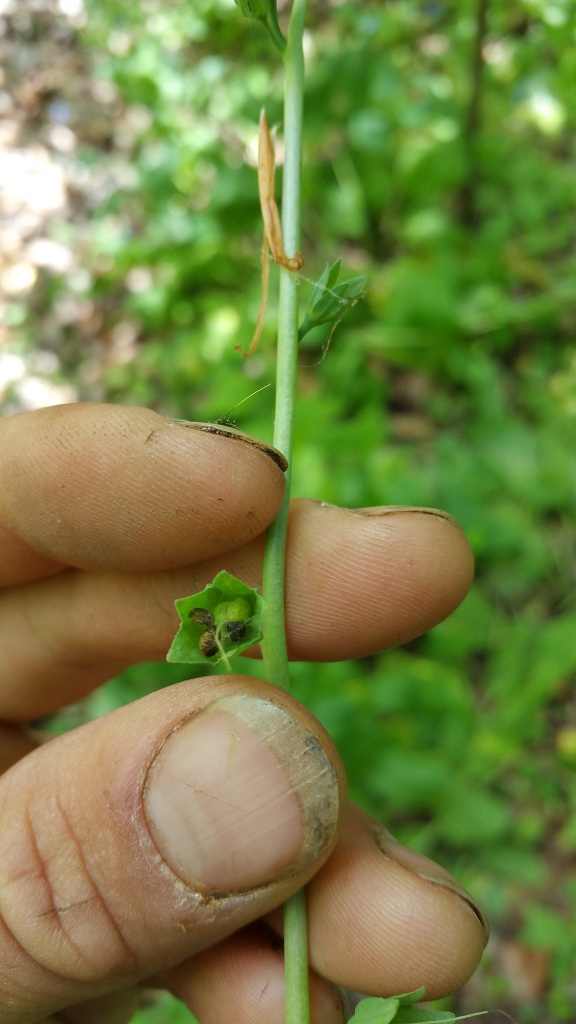
By mid-May, some of the seeds have ripened in their capsules, and they almost immediately fall to the ground. If one wishes to gather good amounts of the seed, some strategy is required. The technique that was shown me is to gather whole stems of plants just before the seeds begin to drop off, but not much earlier as the seeds may not mature properly. This requires some familiarity with the plan’s lifecycle and helps develop one’s powers of observation.
I lay out the stems I’ve collected, and the juices and nutrients remaining in the foliage finish the job of ripening off the seeds, which drop off one-by-one onto a surface for catchment, such as a table, sheets of cardboard, cloth, or whatever other setups one might imagine.
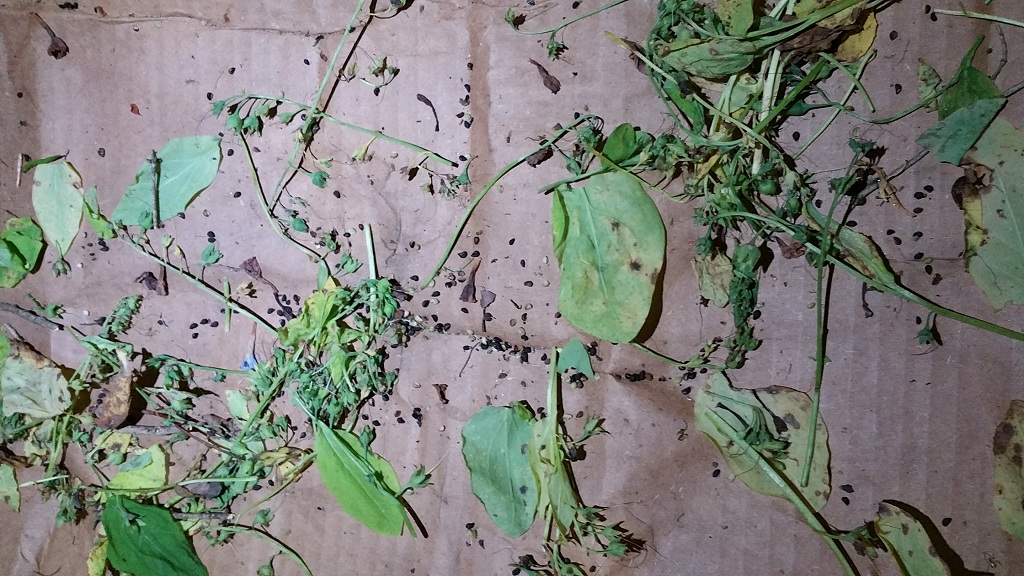
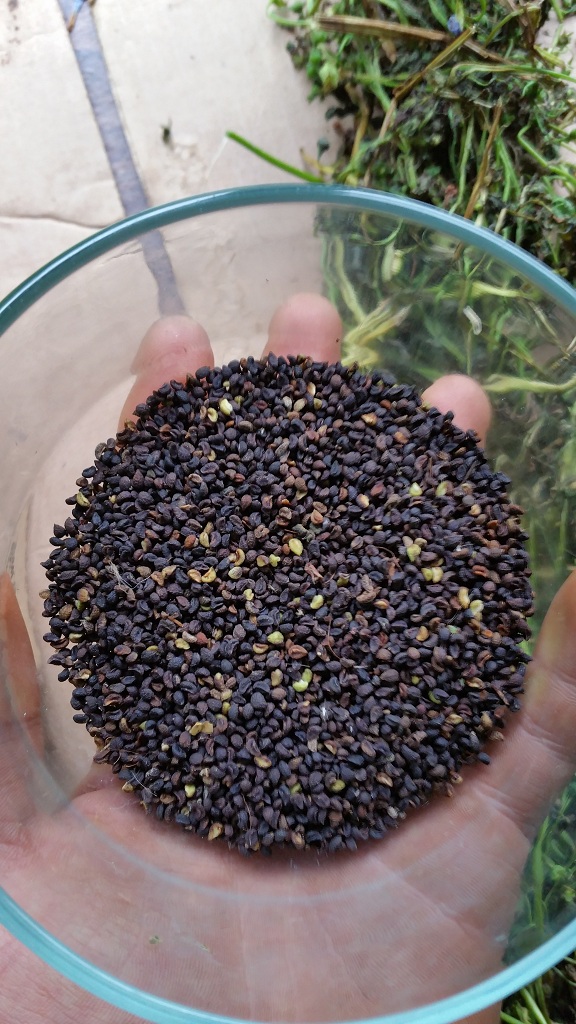
When the seeds are fully ripe, they turn a rich, dark-brown color. The green ones pictured will also turn brown with time. Generally, the darker the seed, the more time it has had to mature and the better its viability.
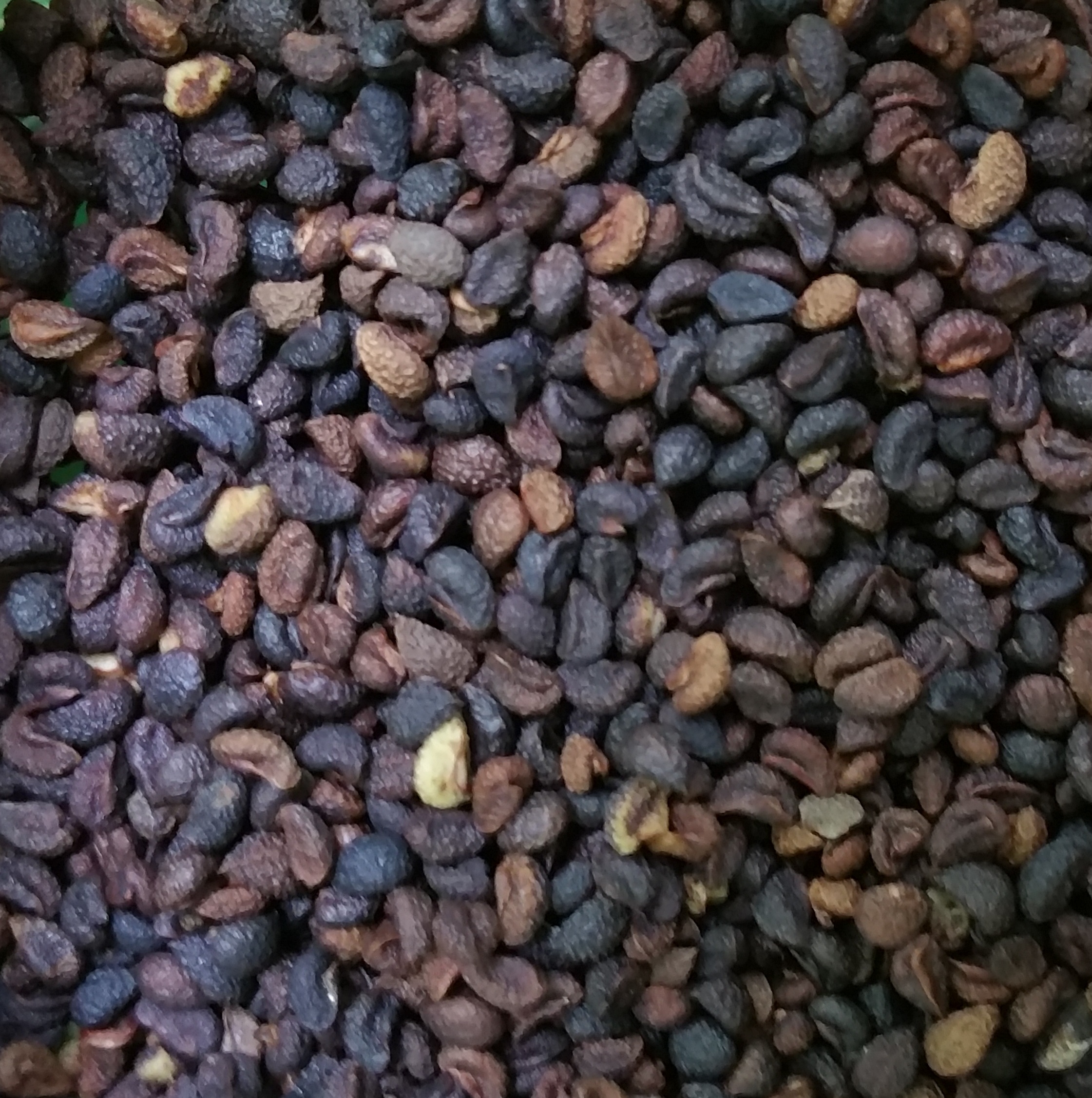
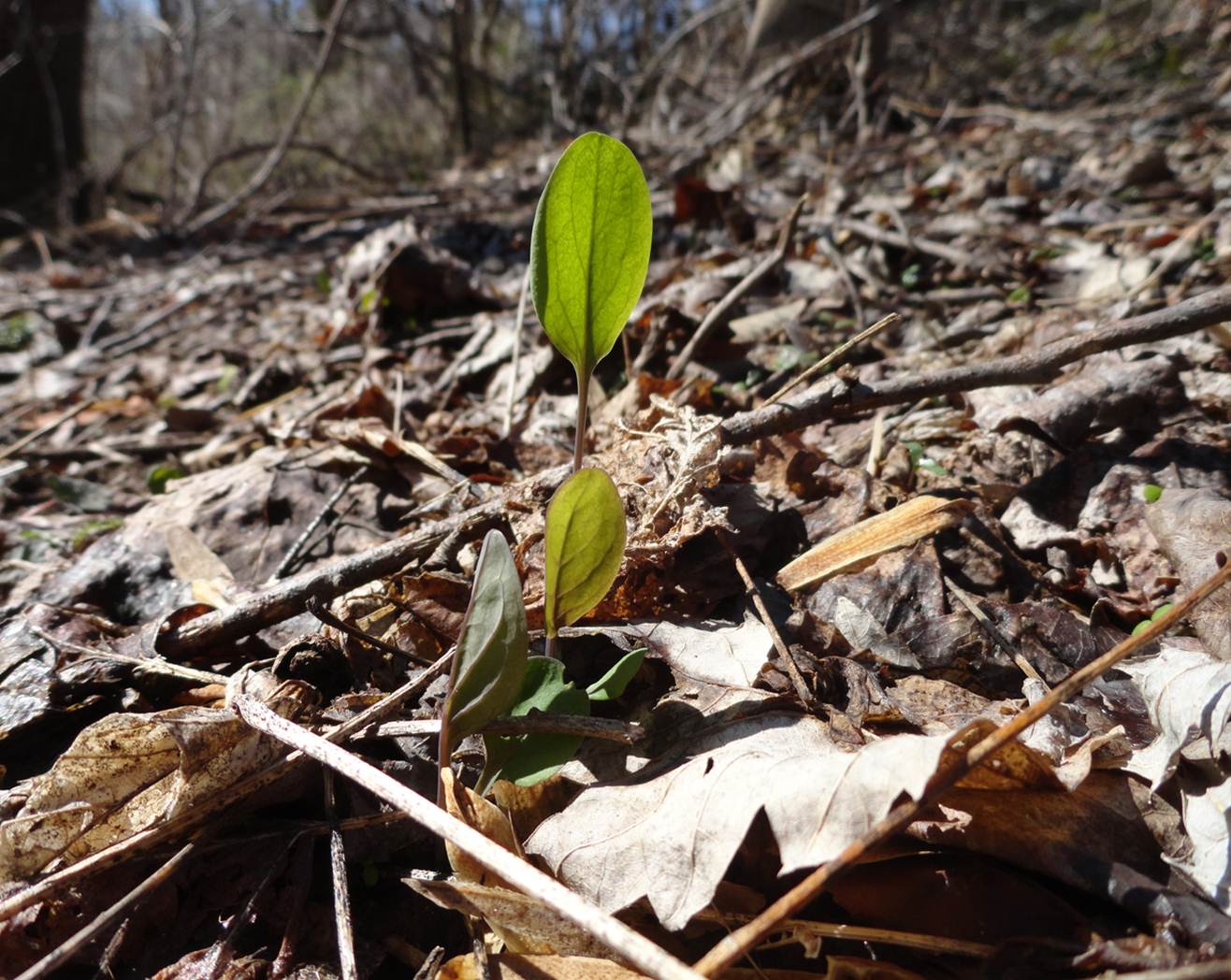
I have heard some conflicting information about the viability of bluebell seed after drying. Some say drying destroys a lot of their viability. Others say they are quite tolerant of drying. In any case, I air on the side of caution and scatter collected seed as soon as I can, mimicking their life-cycle in the wild. I collected most of my Mertensia seed around the end of May; by the end of June I had none of it remaining. All of it was scattered in the wild in optimal habitats where spring ephemeral growth was limited or non-existent.
Finding suitable locations for more bluebells is a fun adventure and wonderful excuse for aimless woodland wanderings (a favorite past-time of mine). Fortunately, the bluebells are quite resilient and will grow in a number of places, including under multiflora rose! It is thus an excellent candidate for ecological restoration.
The seedlings pictured above are one- to two-years-old. It will be another 3 or 4 years before these little guys are popping flowers and setting seed of their own. What a joy to watch them grow!